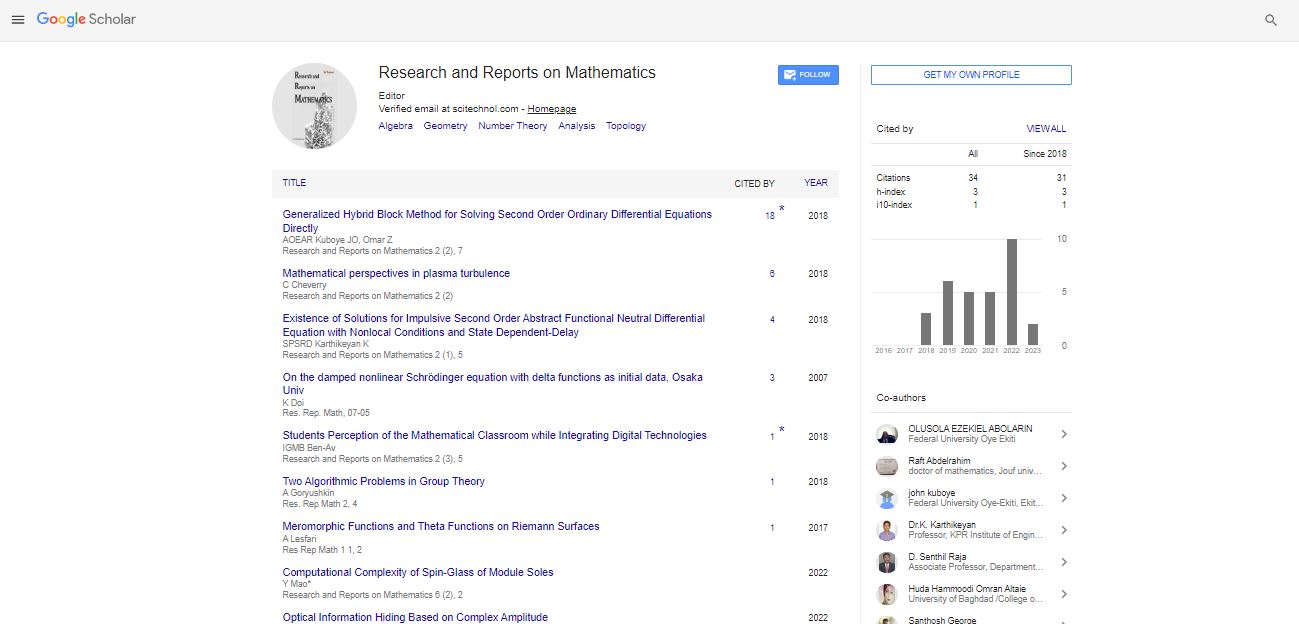Commentary, Met Mater Int Vol: 8 Issue: 1
The Bronze Standard: Shaping the Landscape of Modern Healthcare with Metallic Biomaterials
Yanhua Nie*
1Department of Material Engineering, Guangxi University, Nanning, China
*Corresponding Author: Yanhua Nie,
Department of Material Engineering,
Guangxi University, Nanning, China
E-mail: nieyanhua@gxu.edu.cn
Received date: 24 February, 2024, Manuscript No. RRMT-24-136645;
Editor assigned date: 28 February, 2024, PreQC No. RRMT-24-136645 (PQ);
Reviewed date: 14 March, 2024, QC No. RRMT-24-136645;
Revised date: 21 March, 2024, Manuscript No. RRMT-24-136645 (R);
Published date: 28 March, 2024, DOI: 10.4172/Rrmt.1000202
Citation: Nie Y (2024) The Bronze Standard: Shaping the Landscape of Modern Healthcare with Metallic Biomaterials. Met Mater Int 8:1.
Description
Metallic biomaterials have emerged as essential components in various medical applications, ranging from orthopedic implants to cardiovascular devices. This manuscript provides a comprehensive review of the role of metallic biomaterials in medical applications, highlighting recent advancements, challenges, and clinical implications. From titanium alloys to stainless steel, this review explores the properties, performance, and biocompatibility of metallic biomaterials, offering insights into their diverse applications and future directions in healthcare. Metallic biomaterials plays an essential role in modern medicine, enabling the development of implants, prostheses, and medical devices that restore function and improve quality of life for patients. This section introduces the significance of metallic biomaterials in medical applications, outlining the scope of the manuscript and the importance of addressing biocompatibility, mechanical properties, and long-term performance in clinical settings.
Metallic biomaterials exhibit unique properties that make them well-suited for medical applications, including high strength, corrosion resistance, and biocompatibility. This section provides an overview of the properties of commonly used metallic biomaterials, such as titanium alloys, stainless steel, cobalt-chromium alloys, and magnesium alloys, discussing their mechanical, physical, and biological characteristics. Metallic biomaterials are extensively used in orthopedic implants for the treatment of bone fractures, joint replacements, and spinal fusion surgeries. This section examines the role of metallic biomaterials in orthopedic applications, including the design, fabrication, and performance of hip implants, knee implants, and spinal implants. It discusses advancements in implant materials and surface treatments to enhance Osseo integration, reduce wear, and minimize the risk of implant-related complications.
Metallic biomaterials are integral to the development of cardiovascular devices, such as stents, pacemakers, and implantable defibrillators, for the treatment of heart disease and vascular disorders. This section explores the use of metallic biomaterials in cardiovascular applications, highlighting the challenges associated with biocompatibility, thrombogenicity, and long-term durability. It discusses innovative strategies for improving the performance and safety of cardiovascular devices, including bioresorbable stents and surface modifications to reduce thrombus formation. Metallic biomaterials are widely used in dental implants for the replacement of missing teeth and restoration of oral function.
The role of metallic biomaterials in dental implants, discussing the biocompatibility, mechanical properties, and clinical outcomes of titanium implants, zirconia implants, and other metal-ceramic hybrid materials. It addresses considerations for implant design, surface modification, and soft tissue management to achieve successful Osseo integration and long-term stability. Despite significant progress, several challenges remain in the development and clinical translation of metallic biomaterials for medical applications. This section identifies key challenges, such as immune response, bacterial infection, and implant failure, and discusses potential strategies for addressing them through material innovation, surface engineering, and personalized medicine approaches.
It also highlights emerging trends and future directions in metallic biomaterials research, including additive manufacturing, bioactive coatings, and smart implants for real-time monitoring. The clinical success of metallic biomaterials ultimately depends on their safety, efficacy, and long-term performance in patient populations. This section examines the clinical implications of metallic biomaterials in various medical applications, drawing insights from clinical studies, meta-analyses, and patient registries. It discusses factors influencing patient outcomes, such as implant design, surgical technique, and postoperative care, and emphasizes the importance of multidisciplinary collaboration between clinicians, engineers, and materials scientists to optimize patient care.
Conclusion
Metallic biomaterials have revolutionized medical practice, enabling the development of implants and devices that restore function and improve quality of life for patients. This manuscript has provided a comprehensive overview of the role of metallic biomaterials in orthopedic, cardiovascular, and dental applications, highlighting recent advancements, challenges, and clinical implications. By addressing these challenges and embracing innovative approaches, we can continue to advance the field of metallic biomaterials and enhance patient care in healthcare. This study offers a detailed survey of metallic biomaterials for medical applications, covering orthopedic implants, cardiovascular devices, dental implants, and the associated challenges and clinical implications. It underscores the importance of biocompatibility, mechanical properties, and clinical outcomes in the development and translation of metallic biomaterials for patient care.
 Spanish
Spanish  Chinese
Chinese  Russian
Russian  German
German  French
French  Japanese
Japanese  Portuguese
Portuguese  Hindi
Hindi 